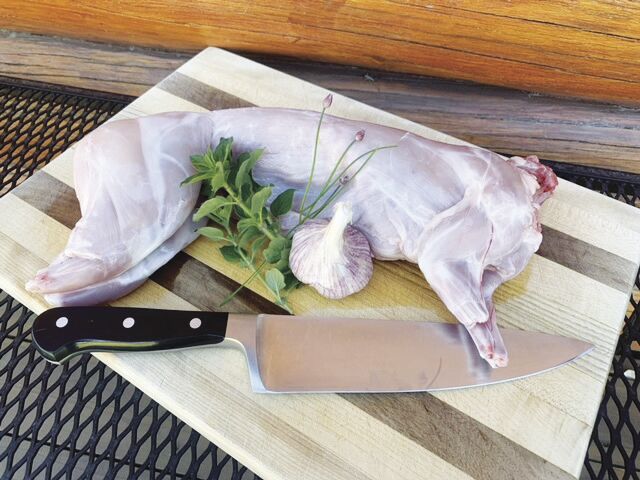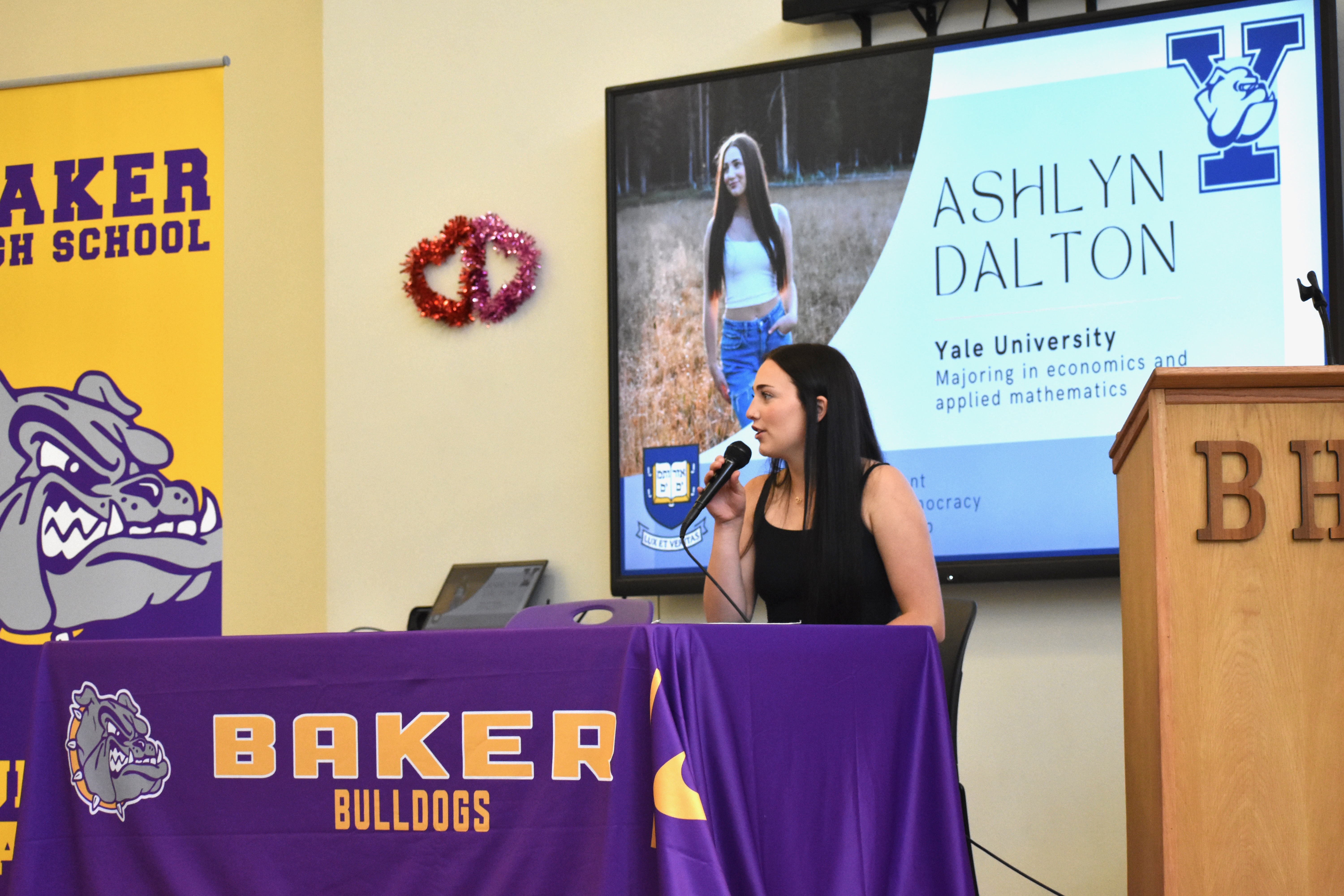Bunny Bounty: Local brothers see big future in meat rabbits
Published 11:15 am Wednesday, August 10, 2022

- Rabbit meat is low in fat and cholesterol.
Big Puff’s days as a show rabbit, Chase Myatt and his younger brother Tyler agree, are over.
In a small shed on the Myatts’ property in Baker County, surrounded by 35 other rabbits, Big Puff sprawls flat on her stomach in her pen, hind legs jutting out. Her furry white coat, which inspired her nickname, features wisps of gray discoloration.
“She’s getting kinda old,” Tyler said.
She’s four years old, nearly a third of the time Chase, who’s 13, has been alive.
Big Puff won’t win top honors this week at the Baker County Fair, where judges pick rabbits based on form and aesthetics. But she can provide — at an impressive rate — something Chase finds even more valuable. A bounty of lean protein.
Not by her own flesh, which despite her large size would only yield about six pounds of meat. Rather, by her ability to provide more rabbits.
Roughly 80 of them in her lifetime.
Their prolific procreation is part of the reason Chase is a leader in the meat rabbit production movement in Eastern Oregon — a market he believes is largely untapped.
On Aug. 5, Chase learned that he’d been selected to attend the National FFA convention in Indianapolis in October.
His nine-page report about his own rabbit meat production won first prize at the Oregon state convention earlier this year. Then he was selected as one of the 10 attendees for his age group — who also won first in their respective state — to attend the national convention.
There, he’ll tell judges why he thinks rabbits should be a larger source of protein for Oregonians, and what he’s discovered about the science behind raising the furry creatures for meat.
The difference two weeks makesWhen he was nine, Chase got Big Puff as one of his first four breeding rabbits. He wanted to get into the 4-H program, but at his family’s previous house, neighborhood rules prevented them from having large animals.
“We did rabbits because they just go in a cage,” Chase said.
But the operation grew quickly. Doe rabbits can have up to a dozen kits per litter and up to six litters per year. Their gestation period is just one month.
The Myatts have moved since he started, but it’s still a small operation — three dozen rabbits still occupy a mere 15-foot by 15-foot space on the family’s farm, called Feather Goat Farm.
He now produces over 100 meat rabbits per year.
Tending to the rabbits isn’t difficult or time consuming, Chase said. He gives them feed and water in the morning and then nestles an ice pack next to their fur on hot days. They only require the nutrients from feed, in the form of small pellets, and hay — which helps them digest their own hair, which they consume during grooming.
“They get everything they need from the pellets,” Chase said.
Plus, they don’t require much feed relative to some other livestock animals. Studies have shown that rabbits have a high feed efficiency — how much feed they consume per pound of meat they produce. Rabbits, similar to chickens, only require about three pounds of feed for every pound of meat, while cows usually require more than double that amount.
This makes rabbits “a good choice for someone trying to be sustainable,” said Jessie Hadfield, assistant professor and animal science specialist at the Utah State University Extension Service.
Part of that efficiency is because they actually recycle their food by eating their cecotrope — a non-fecal excrement rabbits produce after eating, which helps them harvest all the possible nutrients from the feed.
Chase said he supplies his baby rabbits with as much feed as they can eat. They grow quickly, another benefit to producers.
Finding just how quickly is what won Chase first prize in the state.
He wanted to gauge the optimal butchering age for rabbits to maximize his profits and reduce the feed bill.
He kept track of weight and feed intake for rabbits between eight and 12 weeks old. He found that after 10 weeks, their weight gain dropped substantially, but they still consumed the same amount of food.
“They don’t gain all that much per week after that,” Chase said.
At 10 weeks old, his rabbits range from 4½ to 5½ pounds — a size often referred to as “fryers.” According to the Oregon State University Extension Service, “fryers are most desirable because of their tender meat and more desirable color.”
Ten weeks old, Chase found, is the sweet spot of size and quality.
“We’ll butcher them then, because between eight weeks, 10 weeks and 12 weeks, the toughness of the meat after it’s cooked is way different,” Chase said.
He said that at 12 weeks, the meat is much tougher than at 10 weeks, which is why older rabbits are referred to as “stewers” — they’re best cooked in a stew.
While this toughness might turn some people away from the meat, Chase said he believes it’s the “healthiest meat in the world.”
Mostly, that’s because it’s extremely low in fat and cholesterol, according to Hadfield. She said rabbit meat contains healthy vitamins, like iron, that can’t be found in plants.
And it’s a clean product, Chase explained. He hasn’t had a rabbit get a disease, mostly because the pens are up off the ground and they don’t use antibiotics. He said rabbit meat is similar to chicken.
The list of benefits to raising and eating rabbits is long, according to Chase. But getting that meat to the plates of others is a different story.
An obstacle to hop overWhen it comes to butchering, Tyler Myatt, who’s 11, takes over.
He said there are four cuts in a rabbit: back legs, front legs, the saddle and the loin.
“The best cut is the loin, but the legs have the most meat,” Tyler said.
Tyler said his favorite dish is rabbit enchiladas, while the boys’ mother, Jill, likes rabbit with lemon parmesan pasta.
While they can eat their own rabbits for dinner, processing and selling the rabbits themselves on their own property would be illegal. According to state law, rabbits for sale must be processed by a facility licensed specifically for processing rabbits.
That’s not the case for other livestock animals, like chickens. Chicken farmers can process and sell up to 1,000 birds themselves without a license, according to the Oregon Department of Agriculture’s (ODA) farm-direct poultry license exemption law.
“Somehow, a long time ago, they decided ‘you can’t do that with rabbits,’ ” Jill said.
This wouldn’t be a problem if rabbit processing facilities were common. But the only facility in Eastern Oregon, Hawkins Sisters Ranch, is 90 miles away in Wallowa. Chase said the extra shipping costs, along with high feed prices, has increased his prices.
According to USDA census data from 2017, farms in Oregon sold almost 16.5 million chickens that year but only 45,000 rabbits.
Chase sells the meat for $8.50 a pound. That’s still a better price than some grocery stores, the few that do carry rabbit, like the Albertsons in Boise, where Chase said his father, Nick, saw the meat going for $19 a pound.
As of 2020 there were 12 facilities licensed for rabbit processing in Oregon. Raising — and therefore, eating — rabbits in Eastern Oregon is somewhat inaccessible.
But the Myatts are taking action to change that fact, at least on a small scale, for now.
On the Myatts’ property, near the rabbit shed, is a larger skeleton of a barn. Part of this barn, once completed, will be an ODA-licensed rabbit processing facility.
Jill said they have everything lined up to receive the license, pending inspection of their facility, which they plan to open next year. Once the facility is completed they won’t have to splurge on shipping rabbits north. The rabbits will be both raised and butchered on the farm.
“Once we do that, our price will go way down,” Chase said.
Future researchChase Myatt looks at Big Puff, a New Zealand-California mixed breed, and wonders: Do Californian rabbits have more meat than New Zealand rabbits?
He has a sneaking suspicion that New Zealand rabbits, despite their large size and popularity as a meat rabbit breed, might actually yield less meat than Califonians because of their huge bones.
“Big Puff, she’s half New Zealand, and she’s way bigger than everybody else, but there’s not much meat on her, she’s a big boned rabbit,” Chase says.
It’s one of many ideas that Chase has for future research. Luckily, he has plenty of time to do it. And it’s much needed.
Jacob Hadfield, an assistant professor of agriculture at the Utah State University Extension Service, provides educational materials for people interested in raising meat rabbits. Hadfield, who is married to Jessie Hadfield, said the “limited” research on meat rabbits is one obstacle he faces.
“Sometimes it’s hard to answer those just because we don’t have research to back it,” he said.
Chase said he ran into the same problem when researching his award-winning FFA project.
But all three said they think interest in producing rabbit meat is growing.
“I think in 5 or 10 years we’ll for sure start to see (more) rabbit in grocery stores,” Jessie Hadfield said.
Chase said he only knows of a few other rabbit producers in Eastern Oregon, but interest has grown in the last few years.
“During the start of COVID there were so many people who wanted to get into rabbit raising,” Chase said. “There’s still a much higher interest in it now than there was three years ago.”
To buy rabbit meat from Chase, email the Feather Goat Farm at Feathergoatfarm@gmail.com or contact them on Facebook or Instagram @feathergoatfarm.
See Saturday’s issue for coverage from the Baker County Fair.




